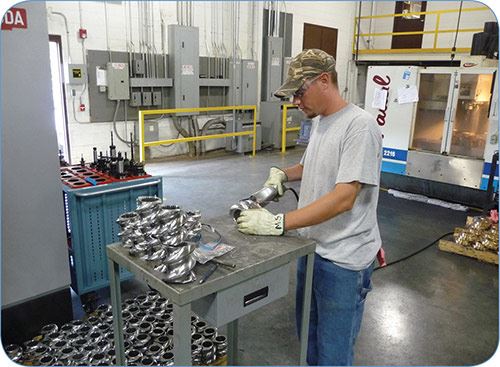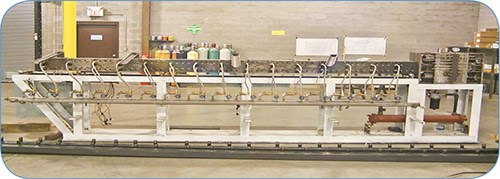If He Built It, It Will Run
This compounder builds its own machines.
Seven plants, including five in the U.S., one in Europe, and another in China … more than 300 employees … $230 million in North American sales in 2011 and close to $300 million globally … 300 million lb/yr of production capacity. A compounding operation that size needs a lot of machines—in fact, more than 100 twin-screw extruders.
What you might not expect is that Standridge Color Corp. (SCC), based in Social Circle, Ga., built each and every one of those extruders themselves—gear boxes and all. And built all the melt-filtration, pelletizing, and downstream equipment, to boot. The extruders—all having segmented screw elements—range in size from 1.5- to 7-in. diam., most with 40 or 50:1 L/D ratios.
In the compounding business since 1980, SCC produces color concentrates and other compounds for injection and blow molding, extrusion, and other processes.
SCC’s novel approach to outfitting its plants with home-grown equipment can be traced to the day it opened its doors. “We started the business by buying old extrusion lines from a film house because we didn’t have the money to buy new machines,” recalls Bob Standridge, SCC’s owner and founder. “We had to modify this equipment, so we more or less morphed into building it from scratch based on that experience.”
In the early 1980s, SCC started with a few toolroom machines to perform repairs. Then it graduated to CNC technology when it retrofitted a large manual lathe to start producing its own extruder screws. It purchased its first “true” CNC equipment, two vertical machining centers, in 1995.
Today, its Georgia headquarters has a 44,000 ft² machine shop outfitted with approximately $10 million worth of machining and fabricating equipment, mostly from Toyoda, Arlington Heights, Ill. “We believe that we have been able to significantly reduce our capital expenditures by building extruders on our own,” Standridge states. “And generally, the larger the machine, the more money we will save. We recently built a 7-in., 2400-hp, twin-screw machine for $1 million that probably would have cost us $2 million to buy.
“But the real plus of doing this it that it allows us more flexibility to try things out, like new equipment or screw designs, or to make fast modifications to what we already have built,” he adds. “And we don’t have to worry that much if things don’t work, because we can fix things ourselves and don’t have to worry about suppliers and their lead times. We manufacture and inventory our own spare parts.”
In addition to screws, barrels, gearboxes, pelletizers, and the like, SCC also builds its own control panels. Its laboratory, though, is equipped with outsourced injection molding, blow molding, and blown/cast film equipment, as well as a wide range of analytical testing systems.
“Our machining abilities give us the ability to compete in our business and give us an edge not only because we save money, but also in product quality and consistency, ” Standridge says.
Related Content
-
More Than a Compounder: They Have the Science to Create New Custom Materials
Insight Polymers & Compounders leverages its expertise in polymer chemistry to develop next-generation materials.
-
Engineering Resins Compounder Expands to Take on More Scrap
Polymer Resources responds to sustainability push by upgrading plant with grinding and shredding equipment to take on both postindustrial and postconsumer reclaim.
-
10 Ways to Improve Twin-Screw Compounding Performance
There are many techniques known to operators and plant engineers for increasing the performance of a twin-screw compounding extruder.

















